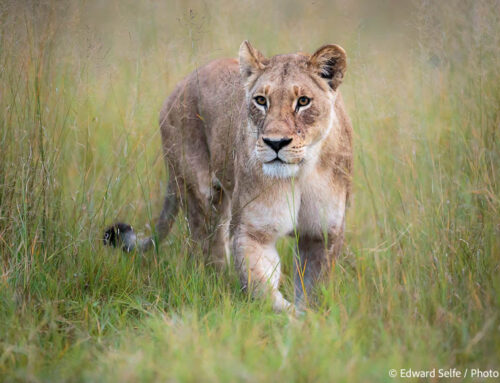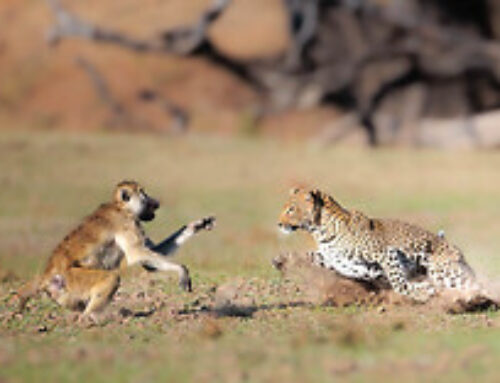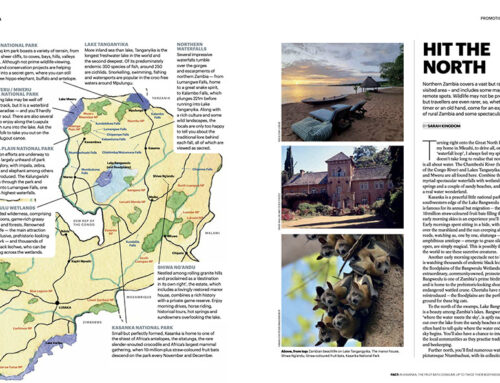For years, beanbags were the best method of supporting a camera in a safari vehicle; in fact, they work well and are still widely used today. However, they are only as good as support that they are rested on. Beanbags are great when the vehicle is static but they often fall on the floor (or over the side!) when the vehicle starts to move. Added to this, many safari vehicles don’t have a suitable position to secure them, meaning that they slip off the tubular bar frame when the camera is rested on them.
I’ve always recommended monopods as a suitable alternative and they work very well most of the time. While they are light and easy to carry, they don’t offer the stability of a beanbag, especially when light levels are very low and shutter speeds need to be slow.
Some operators have now customised their vehicles to have swing arms and gimbal heads at each seat. These are great, but it requires the use of the same vehicle throughout a trip. This is not practical for some photographers who move from camp to camp. Added to this, gimbals require the camera to be fitted and removed each time the vehicle stops and moves, which takes time that can’t be afforded during high-speed sightings. The few seconds it takes to fit a lens plate into a gimbal clamp is enough to miss a shot!
Based on all this, I decided that I needed a method of camera support which:
1) was as solid as a beanbag but would not fall on the floor
2) could be fitted into any style of safari vehicle
3) is light enough to be packed into a bag and transported between camps
4) is height adjustable to suit different people and sightings
5) is dust and rain resistant
6) is always ready for immediate use
This was not an easy remit to fulfil, but I’ve spent the last year trying out ideas and I’ve settled on a bespoke system that I have designed and built from scratch.
In the end, the concept is simple: it’s a wooden-based cushion which mounts on the top of a monopod. The monopod is then attached to the vehicle’s seats, frame and bodywork with bungee cords. The rests are lightweight at the top, so the movement of the vehicle doesn’t dislodge them, and the bungee cords are strong and versatile enough to allow the support to be mounted almost anywhere.
The height can be set by the user via the monopod’s adjustable sections and since the weight of the camera is directly above the monopod, the force is transmitted to the floor of the vehicle; the bungees merely keep them upright. And crucially, it takes less than a second to lift a camera off your lap and rest it onto the cushion, allowing immediate shooting.
I trialled these on my recent safari with Peter and Steve. Peter had two in the passenger seat, one to his left and one to his right. I also mounted 3 in front of the first row of seats so Steve had one to his left, one in front and one to the right, enabling him to shoot in any direction. If I’d had a larger group, I would have mounted another 3 in the second row for guests sitting there.
Here are a few photos of the system in use:
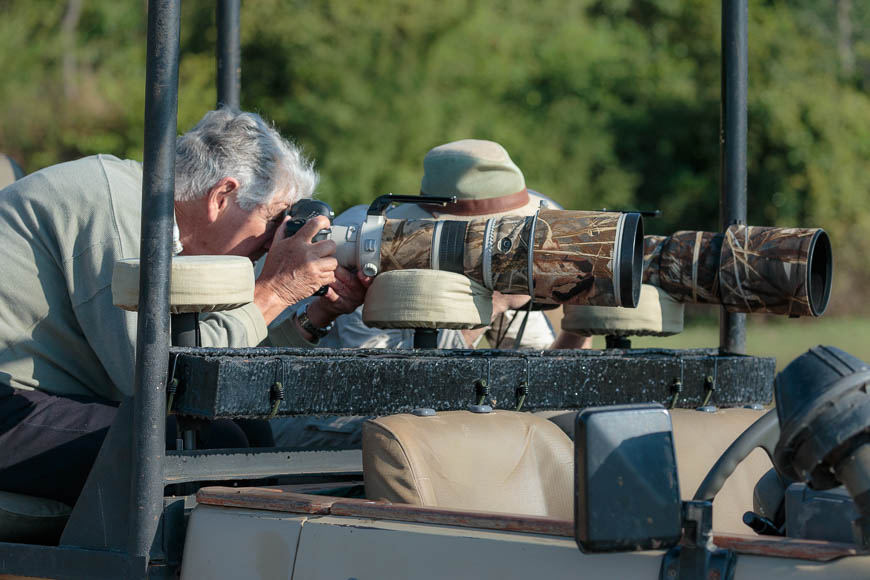
The cushions allow large, heavy lenses to be held steady in a low position, enabling shots from the lowest possible angle of view.
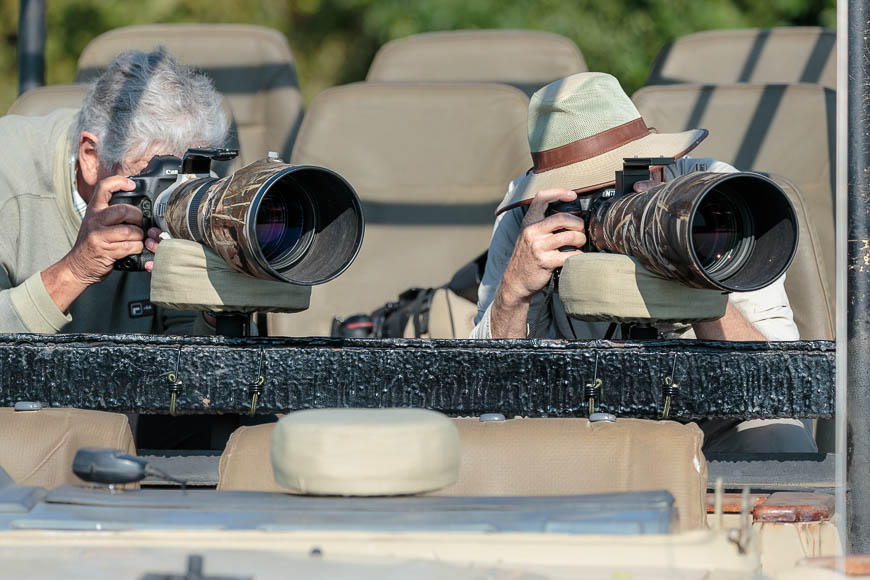
The soft, but supportive, foam cushions mould around the lens’s shape, and the bungees ensure that the rests don’t shift during use.
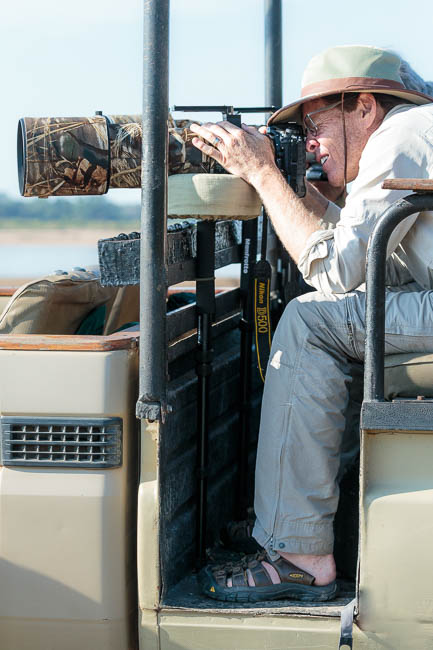
The monopods’ slim design take up no space in the back of the vehicle, enabling photographers to move about freely.
I look forward to putting these to good use on safari this year, and helping my guests get the best possible photos on their trip.

